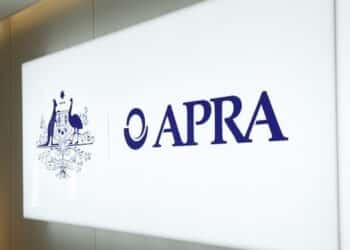The investment manager has highlighted a major roadblock that is troubling local financial services businesses as they move towards implementing mandatory climate reporting.
The creation and implementation of the new standards in Australia relies on Treasury and the Australian Accounting Standards Board (AASB) to work together to create and legislate the new rules.
However, according to Zenith’s head of responsible investment and sustainability, Dugald Higgins, each is on its own path.
Namely, last month, the Australian government published draft legislation seeking to amend parts of the Australian Securities and Investments Commission Act 2001 and the Corporations Act 2001 to introduce mandatory requirements for large businesses and financial institutions to disclose their climate-related risks and opportunities.
However, the AASB launched its own consultation back in October, a few months before Treasury released its updated draft law. As such, discrepancies now exist between the two documents, creating uncertainty within the investment management landscape.
Namely, while the AASB’s proposal, which is based on the initial Treasury proposal, doesn’t distinguish between companies and managed investment schemes (MIS), the Treasury’s new draft law introduces a separate category of “asset owners” – entities that will be required to produce a new sustainability report, alongside their financial statements, if they hold $5 billion or more of assets under management.
This “sudden lack of unity” between Treasury and the AASB raises “urgent questions” for funds, said Mr Higgins.
Speaking to InvestorDaily, he said: “Legally, there is no such thing as an asset owner. You have responsible entities (RE), nominated investment managers, and the managed investment scheme (MIS) itself. So which does the threshold apply to?”
“If it’s the RE, well, they can have multiple MISs, as can the investment manager. Quoting their emissions is not really that material to an investor in the MIS who wants to know what the emissions footprint of the fund they are investing into is,” he explained.
“And what if the RE or manager has one fund which is a sustainable ‘low emissions’ fund and another is an energy intensive high emitter? What then? If it is the AUM threshold for an Australian-domiciled MIS, there are probably only around 20 that would be captured that are available to retail investors, most are just not that big.”
According to Mr Higgins, one proposal would result in the majority of the market being captured under a system prone to instability and lacking in transparency, while the other improves on some of these issues, but only captures a small minority of the market.
“How is the industry supposed to interpret that?” he asked.
Under the Treasury proposal, it’s suggested that a “phased-in approach” should be used for the obligation to prepare a sustainability report, starting with a relatively limited group of very large entities.
Namely, according to the explanatory materials, entities required to prepare sustainability reports will be separated into three groups, with Group 1 entities – companies with a consolidated revenue equal to or greater than $500 million, gross assets of $1 billion or 500 or more employees – obligated to prepare the reports for FY2023–24 and FY25–26.
Group 2 – entities with consolidated revenue of $200 million, gross assets of $500 million and 250 employees – will be expected to prepare a sustainability report for FY26–27, while all other relevant entities won’t assume the responsibility until after financial year 2027.
Adjacent to Group 2 are asset owners, meaning this obligation will befall them from FY26–27. But this is only according to the draft law, with the AASB’s proposal still lacking a separate category for asset owners, and instead maintaining the original three categories.
Mr Higgins is now urging the government for immediate clarity.
Highlighting that over 3,600 registered MIS make-up Australia’s $3.5 trillion funds management industry, the executive said it’s “disruptive and confusing” if the rules are continually rewritten, as has been observed in other jurisdictions such as the US, the UK, and Europe.
“Are we supposed to follow Treasury, or the AASB? Both are supposed to have a hand in designing and ratifying it following some simple steps. Step one, Treasury proposes it the standard, step two, it passes them to the ASSB to create a formal accounting standard, and step three, Treasury then has to legislate it through Parliament.
“All of a sudden, they seem to be driving in opposite directions as far as funds are concerned!”
He encouraged funds to engage with the consultations in an effort to get the regulators on the same page. While Treasury’s consultation closes on Friday, 9 February 2024, the AASB’s consultation remains open until Friday, 1 March 2024.
“We think that, for the funds management industry, now is the time while these consultations are still underway, to go back to the AASB and Treasury and say, ‘We would like you to clearly articulate what the heck it is you’re trying to do, because nobody knows’.
“As it stands at the moment, reporting is still slated to be coming in from 1 July – it’s not a lot of time to start to do things.”







